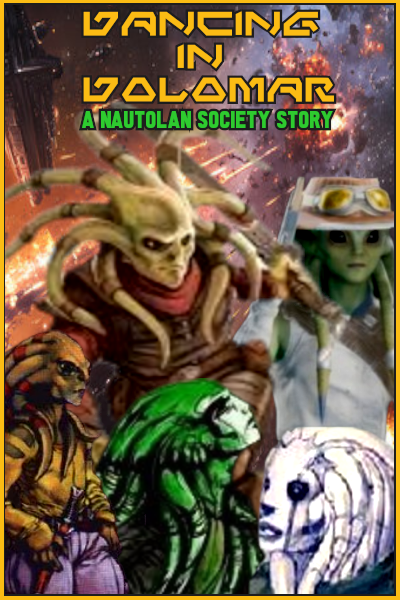
Dancing in Dolomar opens with a gripping depiction of the evacuation of Glee Anselm, immediately establishing the stakes of the conflict and the emotional core of Pixelor’s journey. The early scenes are truly moving, showcasing the horrors of war through the eyes of a young Nautolan. The casting choices were impeccable, with a particularly impressive transition from child to adult Pixelor. The young actor captured the innocence and vulnerability of the character’s early years, while the adult performer embodied the strength and resolve he develops later in life. The film doesn’t shy away from the harsh realities of Pixelor’s exile. His struggles to adapt to the arid desert environment are portrayed with heartbreaking realism. The scene where a young Pixelor cries himself to sleep, the pain of his displacement etched on his face, is particularly poignant. The lack of empathy from his clanmates only amplifies his isolation and underscores the cultural shock he experiences.
The time jump brings us a hardened Pixelor, but the emotional scars of his past are still visible. His challenge for leadership of the clan is a pivotal moment. The fight choreography is brutal and visceral, but it’s the raw emotion in Pixelor’s eyes that truly captivates. When he finally triumphs, the sense of hard-won pride is palpable, not just for the character, but for the audience as well. It’s a moment that resonates deeply, a testament to Pixelor’s resilience and determination. Following his rise to leadership, Pixelor becomes embroiled in the complex politics of the Falleen Federation. While this section adds depth to the world-building, it occasionally bogs down the narrative, diverting focus from Pixelor’s personal journey. The pacing lags somewhat as Pixelor navigates the political landscape, and the emotional resonance of the story diminishes. However, the film triumphantly regains its footing in the latter half.
The middle act may falter, but the film finds its footing again as Pixelor’s life takes a new turn. His marriage to Allana provides him with a sense of stability and purpose, fueling his resolve to fight for a better future for his people. He founds the Nautolan Society, a movement dedicated to preserving Nautolan culture and supporting those displaced from their homeworld. The final act introduces the viewer to other major characters, including Siejo Kutol and Zao Nephalem, who would play a large part in the finale. The Battle of Kiragost is a breathtaking spectacle, a visual feast of epic proportions. The climax of Pixelor Xess is a gut-wrenching emotional rollercoaster. As the C-3 Nautolan Spear, packed with civilians, faces imminent destruction, Pixelor’s intervention is both shocking and deeply moving. His sacrifice is not just a heroic act; it’s a deeply personal one, driven by his love for his people and his unwavering belief in their future. The scene is rendered with incredible emotional depth, leaving the audience reeling from the impact of his loss, yet inspired by his courage. Despite a mid-film lull, Dancing in Dolomar: A Nautolan Society Story delivers a powerful and emotional cinematic experience. The film’s breathtaking visuals, coupled with compelling performances, make it a must-see for fans of space operas and war dramas.
Dancing in Dolomar: A Nautolan Society Story has been released in theaters across the galaxy and will soon be available for streaming.
